In the quiet fields of Jersey, a discovery was made that would forever change our understanding of the Celtic world. More than a decade ago, metal detectorists Reg Mead and Richard Miles unearthed one of the most significant Celtic hoards ever found: the Le Câtillon II hoard. This treasure, buried for over two thousand years, included nearly 70,000 silver coins, gold jewelry, and intricate artifacts. But the mystery of why such a vast fortune was hidden in the remote island of Jersey remains. What could have driven the Coriosolitae tribe to bury their wealth in this isolated location during the chaos of the Roman invasion? The answers to this age-old question are still unfolding.
The Discovery of the Le Câtillon II Hoard
For decades, Reg Mead and Richard Miles scoured the fields of Jersey in search of something extraordinary. Little did they know that their years of searching would culminate in one of the most significant archaeological discoveries of the century. The Le Câtillon II hoard was unearthed after three decades of perseverance, and its contents surpassed even the most ambitious hopes of the discoverers. The hoard’s enormous size, along with its impressive array of Celtic coins, gold jewelry, and other artifacts, left archaeologists astounded. The discovery has since sparked an ongoing debate about its origins and purpose.
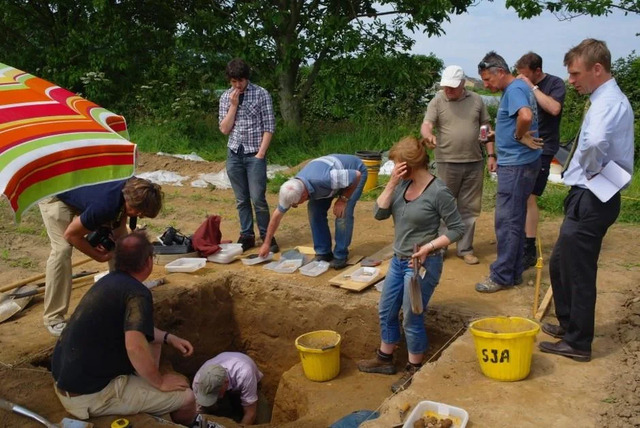
The Coriosolitae Tribe: The Warriors Behind the Hoard
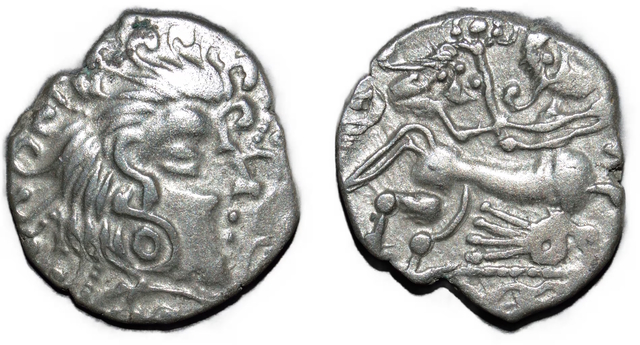
Recent research points to the Coriosolitae, a Celtic tribe from the region of modern-day Brittany, as the likely owners of the hoard. The Coriosolitae were one of the many tribes who fought against the expanding Roman Empire during the Gallic Wars.
In 57 BCE, they joined a coalition of Celtic tribes in a final attempt to repel Roman forces under Julius Caesar. However, their defeat left them vulnerable and desperate to preserve their wealth and cultural artifacts. The hoard, possibly gathered as a last-ditch effort to protect their treasures from Roman conquest, may have been hidden in Jersey as a secure refuge.

Video
Watch the video of the disassembly of a Celtic coin hoard.
Why Was the Hoard Buried in Jersey?
At first glance, Jersey might seem like an unlikely place to bury such a valuable treasure. However, new theories suggest that Jersey was seen not as an isolated backwater, but rather as a strategic refuge. Dr. Phil de Jersey, a leading expert in Celtic coinage, proposed that the island was considered safer than the mainland, especially with the ongoing turmoil of the Gallic Wars. Jersey’s location, coupled with its natural defenses, made it an ideal hiding place for the Coriosolitae tribe’s treasure.
The region’s strategic importance only becomes clearer when examining Jersey’s geography. While the island might have seemed remote, it had access to the wider Celtic world through maritime routes. Local sailing families were well-versed in navigating the region’s rocky coastline, making it an ideal place for storing wealth that needed to remain hidden from the Roman forces.
Archaeological Treasures Found in the Hoard
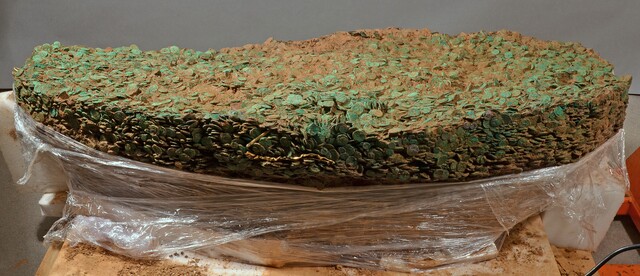
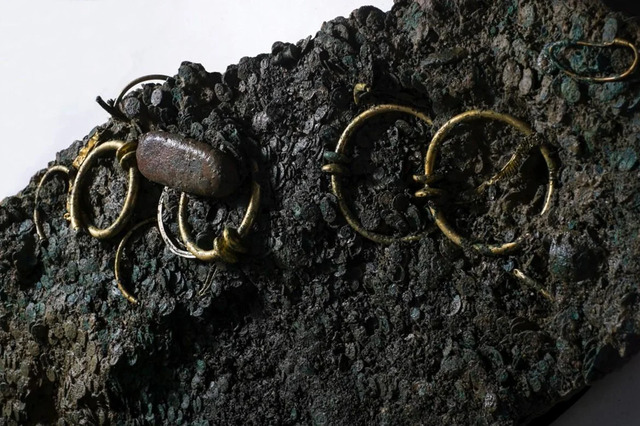
The Le Câtillon II hoard is not just remarkable for its size but also for the exceptional artifacts it contains. The hoard features nearly 70,000 coins, most of which were minted by the Coriosolitae tribe. These coins are significant not only for their value but also for what they reveal about the economic and cultural practices of the Celts.
In addition to the coins, the hoard contains 23 gold staters, several gold torques, glass and bone beads, a brooch, and even a Late Bronze Age spearhead dating back to 950–800 BCE. These items offer a glimpse into the material culture of the Coriosolitae, showcasing the sophistication of their craftsmanship and their wide-reaching trade networks.
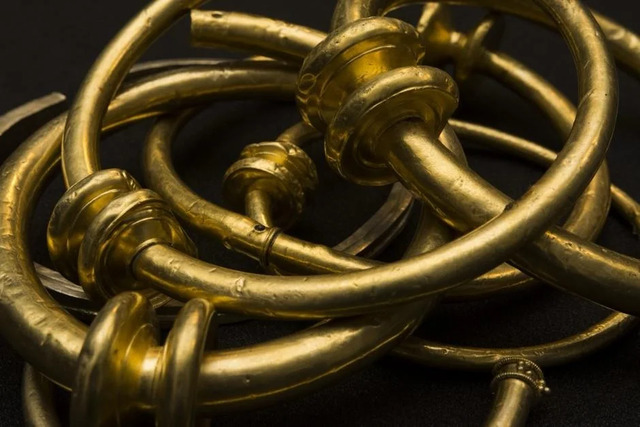
New Insights from Geophysical Surveys
The Le Câtillon II hoard was not an isolated discovery. Recent geophysical surveys have uncovered evidence of a previously unknown Celtic settlement near the hoard’s find site. These findings suggest that Jersey was not just a place where treasure was hidden but also an active area of settlement and human activity. Linear anomalies detected during the surveys resemble Late Iron Age settlements found in northern France, reinforcing the idea that Jersey was part of a broader network of Celtic communities. This revelation challenges the previous assumption that Jersey was a desolate, isolated location during the late Iron Age.
Dr. Hervé Duval-Gatignol of the Société Jersiaise emphasized that the island’s difficult-to-navigate reefs might have made it an attractive site for hiding valuables, as few people would dare to venture into the treacherous waters. The presence of a Celtic settlement and the discovery of the hoard further support the idea that Jersey was strategically significant during this period, both in terms of trade and defense.
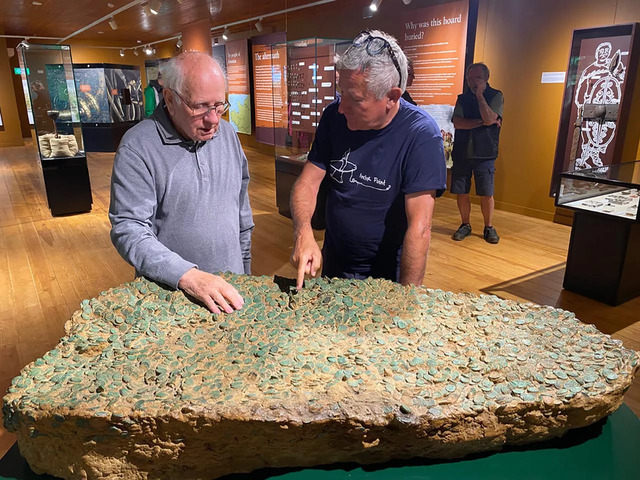
The Strategic Significance of Jersey in Celtic Times
Jersey’s geography and its role in disrupting French trade and military movements only add to its importance in this historical context. The island was strategically located, allowing it to act as a focal point for maritime activities during the late Iron Age. The natural harbor and rocky coastline provided shelter from the elements and made it a valuable asset for the Celts. Archaeologists have suggested that Jersey’s location may have been a key factor in its selection as the site for burying such an important treasure, especially considering the pressures faced by the Coriosolitae during the Roman expansion.
Cultural Interactions in Iron Age Western Europe
The Le Câtillon II hoard also serves as a testament to the complex interactions between Celtic tribes and other societies in Western Europe. The presence of coins from more than 20 other tribal groups, including the Osismii of central Brittany and the Durotriges of southern England, highlights the interconnectedness of Celtic communities across the region. The hoard provides insight into the far-reaching trade networks and the diverse cultural exchanges that took place between different tribes during the late Iron Age.
Conservation Challenges and Preservation Efforts
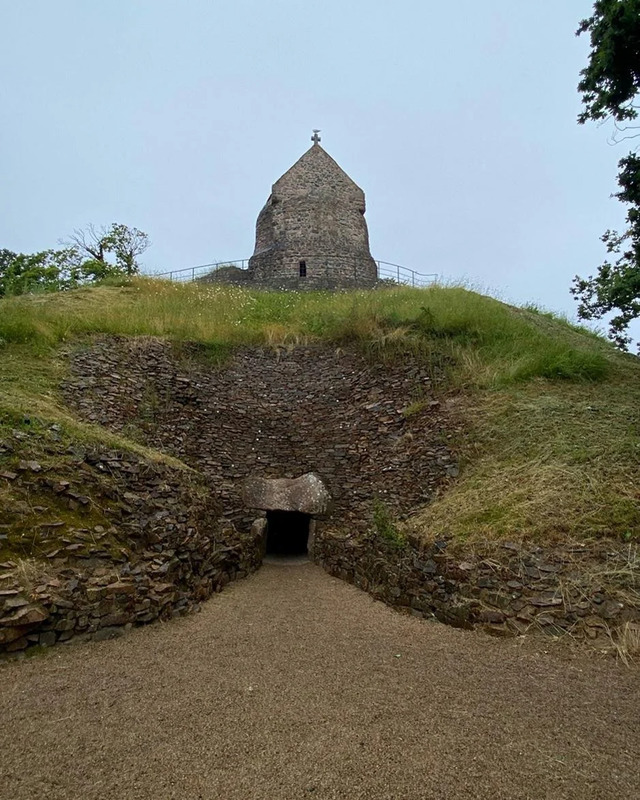
The process of conserving and preserving the Le Câtillon II hoard has been a monumental task. The hoard’s large size and delicate condition presented numerous challenges for archaeologists and conservators. The coins, torques, and other artifacts had to be carefully removed, cleaned, and studied to ensure that they would remain intact for future generations. Today, the hoard is housed in the La Hougue Bie Museum in Jersey, where it continues to draw attention from scholars and tourists alike.

Video
Watch the video about the discovery of a 2,000-year-old Iron Age treasure hoard in Britain.
Conclusion: The Legacy of the Le Câtillon II Hoard
The Le Câtillon II hoard is more than just a collection of ancient treasures; it is a window into the past that offers invaluable insights into the lives and struggles of the Celtic peoples. From its strategic burial location to its rich cultural contents, the hoard challenges previous assumptions and opens new avenues of research into Celtic society. As further excavations and studies continue, the Le Câtillon II hoard is poised to provide even more answers about the complex interactions and history of the Celts in Western Europe. Ultimately, the hoard reminds us that even the smallest details of history can tell profound stories about the past.



